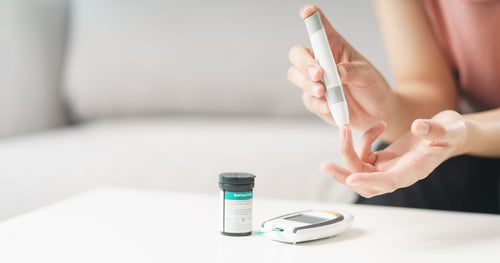
Vitamin D3 should be part of everyone’s core supplement regimen, along with omega-3s, a multivitamin, and probiotics. Vitamin D receptors are found everywhere in our body, from our immune cells to our brain. Vitamin D3 promotes healthy growth and development; teeth, bone, and muscle health; healthy immune and cardiovascular function; and mood health.
Vitamin D From Food and The Sun
We are able to get vitamin D from sunlight, especially during warmer months, but the sun is not strong enough in the fall and winter. Complicating matters further, sunscreen and clothing block skin from producing enough Vitamin D from sunlight. So even in summer, our levels may still be below the ideal threshold.
Another challenge is there are few naturally-occurring dietary sources of vitamin D. This means most of us need to take vitamin D supplements to support healthy levels. Vitamin D is found in the flesh of fatty fish, like salmon (approximately 500 IU (12.5 mcg) in 3 ounces), mackerel, tuna, and cod liver oil.
Recommended Vitamin D Intake
Some mushrooms provide vitamin D2, which our body converts to the bioavailable D3 form. Most dietary vitamin D comes from fortified foods such as orange juice, non-dairy beverages, egg yolks (from D3 supplemented hens), and some dairy foods like milk, yogurt, and cheese. Unfortunately, when levels are assessed, the majority of people in North America have insufficient or even deficient levels of the sunshine vitamin.
The recommended daily intake of vitamin D3 varies widely across expert organizations. The Institute of Medicine (IOM) Food and Nutrition Board recommended daily allowances (RDAs) are the official recommendations for the US. Their latest recommendations are 400 IU (10 mcg) per day of vitamin D3 for infants, 600 IU (15 mcg) per day for children over 1 years old, and 600 to 800 IU (15 to 20 mcg) per day for adults. The Vitamin D Council, Endocrine Society, and many physicians feel these recommendations are too low and should be increased.
The IOM states adult sufficiency of vitamin D3 blood levels is 20 ng/mL. The Endocrine Society prefers 30 to 100 ng/mL. And the Vitamin D Council suggests a target of 40 to 80 ng/mL. Most laboratories show 30 to 100 ng/mL as in the healthy range.
Testing Vitamin D Levels
A simple blood test that measures 25(OH)D is the best way to ensure that our vitamin D levels are within the normal range, ideally above 30 ng/mL (75 nmol/L).
Carlson now offers a convenient, at-home Vitamin D Test Kit to measure 25(OH)D levels safely. It's a simple finger prick test that is mailed into the lab. Results are received back in about one to two weeks with no need to visit the doctor. Let's not take a chance with our health. We should supplement our diet with vitamin D as necessary and check our levels regularly.




